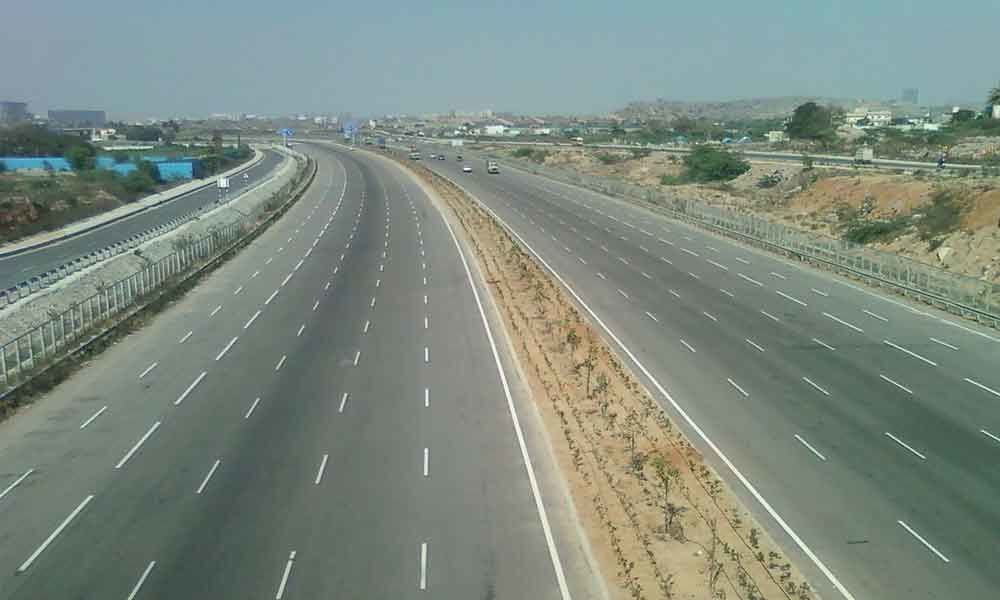Live
- IIT Delhi students receive job offers from US, UK, UAE, Japan in abundance
- Pushpa 2 Leads to the Capture of Notorious Gangster Vishal Meshram in Nagpur
- WhatsApp to End Support for Older Android Phones From January 1, 2025
- CM Stalin Slams BJP-Led Government Over Election Rules Amendment
- Necrophilia: Chhattisgarh HC Observes Loophole In Indian Penal Code
- Jaipur tanker blast: Vasundhara Raje meets kin of injured, follows medical protocol
- AAP-BJP Showdown Ahead Of Delhi Assembly Elections
- Can a woman make such allegations out of imagination: K'taka Minister
- SA will shine through in Champions Trophy, says Walter after 3-0 loss to Pakistan
- Trump Demands Panama Canal Return, Criticises Panama's Management and Fees
Just In

Given the size of the Indian economy and expectations of future growth, infrastructure remains a crucial area of focus for both financial and strategic investors alike.
Given the size of the Indian economy and expectations of future growth, infrastructure remains a crucial area of focus for both financial and strategic investors alike.
As capital flow gradually picks up in the sector over the last five years and operational assets are bought out, the obvious question is: What next in terms of infrastructure projects?
The last few years have seen a significant focus from a plethora of global infrastructure investors in India, especially in the transportation and energy sectors.
The primary strategy has been buying out companies or a portfolio of operational brownfield projects. Sellers of such projects have been motivated by the need to reduce their debt and in some cases carve out non-core assets.
Buyers of brownfield assets have been motivated by getting access to assets that are operational, thereby giving them a foothold in the Indian market.
However, as brownfield assets see more capital pursuing them, we see two trends emerging. Firstly, high-quality brownfield assets for sale are fewer now, given the capital inflow over the last few years.
Secondly, given the increased competition, from an investor's perspective, due to the yield compression in brownfield assets, the returns available may not be commensurate to the underlying risk.
Therefore, the need for investors to move beyond brownfield assets is one that needs attention.
For India, focused investors such as pension funds and private equity funds, the requirement to look beyond brownfield infrastructure assets was in the works for a while.
Mainly, extending further out on the risk curve is required to deploy more capital to work. Beyond brownfield assets, investors must now consider assets that aren't necessarily purely greenfield but are under-construction and close to completion.
The move towards under-construction projects will allow investors access to a larger pool of assets to choose from. Given the still strained balance sheets in the infrastructure sector, opportunities exist that need to be tapped into. The move towards assets that aren't operational or a portfolio of such assets is a natural progression in the market.
The vital question is the valuation of such assets. Fundamentally, for distressed projects and under-construction projects, there is a potential for unlocking value by investors accessing such projects.
Acquiring projects suffering from either time and cost overruns, or both for that matter, at attractive valuations is the key. The seller of such assets can unlock much-needed capital, and the users of such assets can hope to access the much-needed infrastructure sooner.
In effect, investors will have to be more "hands-on" with which to approach under-construction projects.
The need for a more operationally intensive plan will require financial investors to team up with operator companies. Such partnerships will take a variety of forms ranging from joint ventures to the utilisation of financial vehicles that allow for partnerships between operators and capital providers.
For operational industry players such as integrated energy businesses, an opportunity exists wherein they can potentially utilise their operational expertise to get an edge in the infrastructure market.
The recent deal in which Hindustan Construction Company (HCC) monetised a pool of arbitration awards is a variant of this strategy, and a deal that displays how investors can unlock value through moving higher on the risk curve.
In this particular case, HCC gets access to much-needed liquidity and the investors, the Blackrock-led consortium, get an opportunity to utilise their long-term capital to generate investment returns.
Over the past few years, the investor interest in accessing high-quality brownfield assets to deploy capital has been a natural first step taken by both large and small players entering the Indian markets.
Given the constrained balance sheets of many Indian businesses, especially infrastructure companies, has meant that carving out and monetisation of assets to reduce debt was a natural progression in the market.
However, in a multi-decade time horizon, given India's vast infrastructure needs, a move higher on the risk curve towards under-construction projects to be able to deploy more significant amounts of capital is only natural.
From an investor perspective, accessing non-brownfield projects implies dealing with three primary issues around land acquisition, construction risk and an effective infrastructure-linked ecosystem.
The immediate investment focus must shift towards projects or portfolios of projects where risk linked to the latter two must be undertaken, while land acquisition issues have primarily been resolved.
The capacity of investors and the strategies adopted to deal with non-brownfield projects will lead to increased infrastructure investments and will expedite infrastructure creation.
Investors and the government will have to keep a keen eye on any policy changes that might be needed as the market evolves with increasing amounts of capital looking towards incomplete and yet attractive infrastructure assets.
Taponeel Mukherjee

© 2024 Hyderabad Media House Limited/The Hans India. All rights reserved. Powered by hocalwire.com







